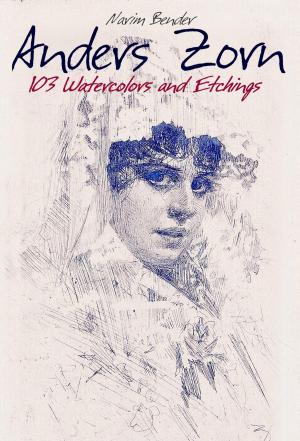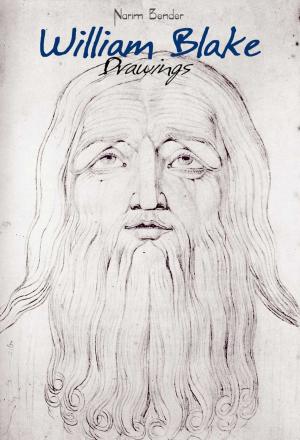Edgar Degas
Nonfiction, Home & Garden, Crafts & Hobbies, Art Technique, Drawing, Art & Architecture, General Art| Author: | Narim Bender | ISBN: | 9782897282103 |
| Publisher: | Osmora Inc. | Publication: | April 17, 2014 |
| Imprint: | Osmora Inc. | Language: | English |
| Author: | Narim Bender |
| ISBN: | 9782897282103 |
| Publisher: | Osmora Inc. |
| Publication: | April 17, 2014 |
| Imprint: | Osmora Inc. |
| Language: | English |
Thirty-eight sketchbooks by Degas have survived essentially intact. They cover the period between 1853 and 1886 and constitute the most significant sustained record of any Impressionist artist. His early sketchbook contains diligent student work, such as sketches of antique statuary and copies of Renaissance frescoes and paintings. The subjects range from the whimsical to the thoughtful, with quick portraits of dinner guests, sketches of dancers, and scenes from a Turkish bath in the later notebook. Degas' much-heralded explorations of dancers—in rehearsal, on stage, and at rest—began in the 1870s and intensified during the ensuing decades. This period also marked the beginning of his success as an artist. One of Degas' principal concerns as a draftsman was analyzing the movements and gestures of the female body.
Though noted for his attention to the female figure, Degas executed many studies of grouped horses and jockeys from which he would use figures in later compositions. Later in his career, Degas experimented with mixing drawing media and printmaking techniques. He began the drawing in 1885 using an impression from his 1877–78 lithographs of a concert at Café des Ambassadeurs, which he extended along the bottom and right edges, and drew over in dense strokes of pastel. Degas first produced a mono-type—a unique print made from drawing in ink on a metal or glass plate—of two singers on stage, seen from behind, with a view to the audience. He then enlivened the print with richly colored pastels. In the village of Diénay near Dijon, Degas recalled scenery from the drive through the Burgundian countryside and produced about fifty mono-type landscapes. To create this drawing, he used oil paint (and apparently his fingers) to indicate a few lines of landscape on the plate and printed one or two proofs, hanging them to dry. Later, he completed the composition with a rich layer of pastel.
Thirty-eight sketchbooks by Degas have survived essentially intact. They cover the period between 1853 and 1886 and constitute the most significant sustained record of any Impressionist artist. His early sketchbook contains diligent student work, such as sketches of antique statuary and copies of Renaissance frescoes and paintings. The subjects range from the whimsical to the thoughtful, with quick portraits of dinner guests, sketches of dancers, and scenes from a Turkish bath in the later notebook. Degas' much-heralded explorations of dancers—in rehearsal, on stage, and at rest—began in the 1870s and intensified during the ensuing decades. This period also marked the beginning of his success as an artist. One of Degas' principal concerns as a draftsman was analyzing the movements and gestures of the female body.
Though noted for his attention to the female figure, Degas executed many studies of grouped horses and jockeys from which he would use figures in later compositions. Later in his career, Degas experimented with mixing drawing media and printmaking techniques. He began the drawing in 1885 using an impression from his 1877–78 lithographs of a concert at Café des Ambassadeurs, which he extended along the bottom and right edges, and drew over in dense strokes of pastel. Degas first produced a mono-type—a unique print made from drawing in ink on a metal or glass plate—of two singers on stage, seen from behind, with a view to the audience. He then enlivened the print with richly colored pastels. In the village of Diénay near Dijon, Degas recalled scenery from the drive through the Burgundian countryside and produced about fifty mono-type landscapes. To create this drawing, he used oil paint (and apparently his fingers) to indicate a few lines of landscape on the plate and printed one or two proofs, hanging them to dry. Later, he completed the composition with a rich layer of pastel.















